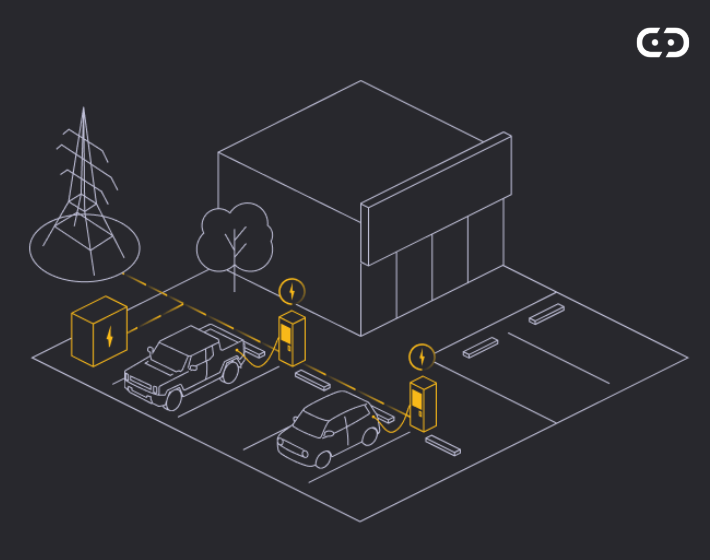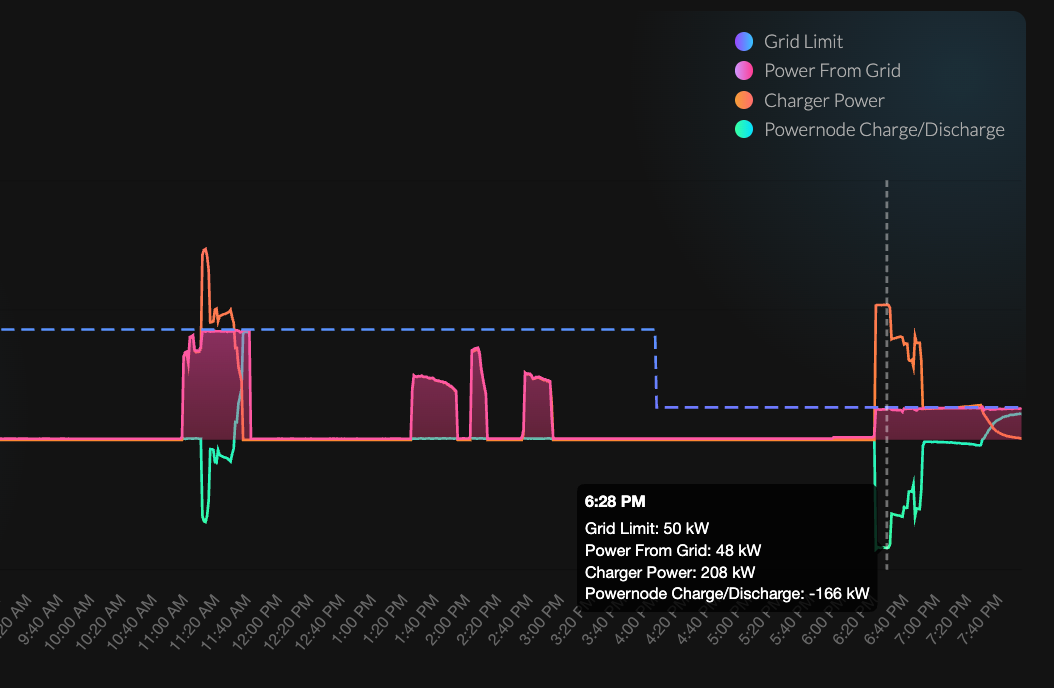At Electric Era, we’re obsessive about our mission: to electrify transportation with ubiquitous, affordable, and reliable EV fast charging.
Achieving that mission means tackling many challenges – from uptime and reliability to grid constraints and government incentives. These are challenges we have expert teams built to solve. But at the heart of these hurdles lies a defining challenge, one that shapes our technology and strategy every day: making EV charging commercially viable for the retailers who host it.
The bottom line is that no matter how fast or reliable EV charging becomes, it cannot scale if it doesn’t make good business sense for those investing in the infrastructure. Climate tech reaches meaningful impact by becoming an economic inevitability – something business owners can't afford to miss out on.
That’s exactly what our technology is designed to do.
Challenge: Demand charges plague charging ROI
This week, our technology delivered the perfect example of what it means to make charging economically viable in places it simply could not exist otherwise.
A customer offering fuel services in a remote area came to us with a problem. They wanted to add EV charging, but their property operates under a utility with legacy coal assets and limited solar coverage. This grid constraint resulted in punishing demand charges for our customer – up to $24 per kW during on-peak hours.
This unfortunately is not a unique problem. In rural, low-density regions across the US, these kinds of rate structures make it nearly impossible for retailers to justify investing in EV charging infrastructure. Every evening, when grid power is most expensive, operators face steep costs simply for making power available. Even with strong demand and government incentives, without effective demand management, the economics collapse.
Given today’s grid constraints, how can EV drivers across the U.S. ever depend on ubiquitous, reliable, fast charging unless providers can control costs imposed by extreme demand charges?
Solution: Smart software meets battery storage
Electric Era’s vertically integrated hardware and software solve this problem through software-set “economic grid limits.”
How it works:
- We blend grid power with stored energy from our Battery Energy Storage System (BESS).
- During expensive on-peak hours, we use software to aggressively limit grid draw while enabling BESS to supplement power and energy requests from drivers.
- We charge the battery when energy from the grid is cheap, and charge cars from the battery when energy from the grid is expensive.
Not all BESS systems are created equal. Battery-integrated chargers may add energy storage to a site, but they don’t solve the underlying problem of high demand charges – they simply provide more capacity without intelligently managing when and how power is drawn from the grid. Electric Era’s patented battery-backed architecture intelligently manages power flow between the grid, battery, and charger in real time – delivering full power to drivers while keeping utility costs low.
This approach saves money without compromising the driver experience.

Real-world example: Smart energy management in action
Electric Era’s technology provides significant flexibility in how to manage demand – and during commissioning, we develop a site-specific, statistically informed energy management strategy (more on that here!). For this customer, we analyzed load profiles from similar sites to understand not just how much demand to expect, but critically, when to expect it. As shown by the blue dashed line in the image below, this led to a 170 kW grid limit off-peak (420 kW total capacity), dropping to 50 kW on-peak (300 kW total) when demand charges are high.
This week, a single high-powered vehicle requested 208 kW for an extended period during peak time (orange line). For sites with modest charging activity, this is enough to erase any return on investment. Instead, our system delivered the full 208 kW charge while limiting grid draw to 48 kW (blue dashed line), using the BESS to cover the difference. With our EMS strategy in action, the site avoided $4,000 in monthly demand costs while keeping the driver experience seamless.
This approach doesn’t just save money – it transforms the business case for charging in energy-constrained markets.

Bigger picture: Unlocking charging access everywhere
Our mission is to electrify transportation with ubiquitous, affordable, and reliable EV fast charging. We can’t achieve this without ensuring charging can exist in locations across the US where traditional economics make it nearly impossible.
Through integrated hardware and intelligent energy management, Electric Era makes fast charging economically feasible in some of the hardest-to-reach markets. We’re turning sites that were once uneconomical into profitable, high-performing charging locations that retailers want to invest in. Drivers need it, retailers benefit from it, and Electric Era is making it possible.
Interested in adding EV charging but unsure about costs? Let’s connect and explore a solution!